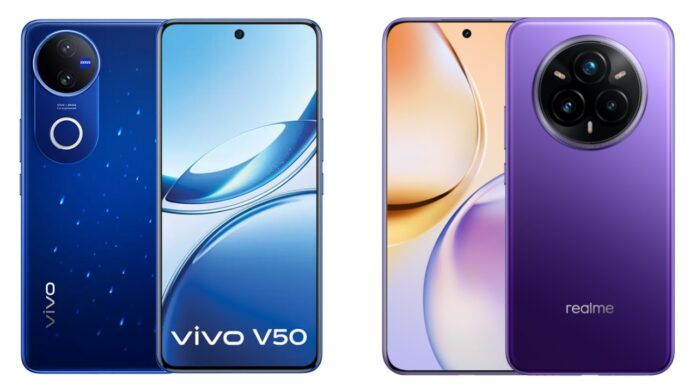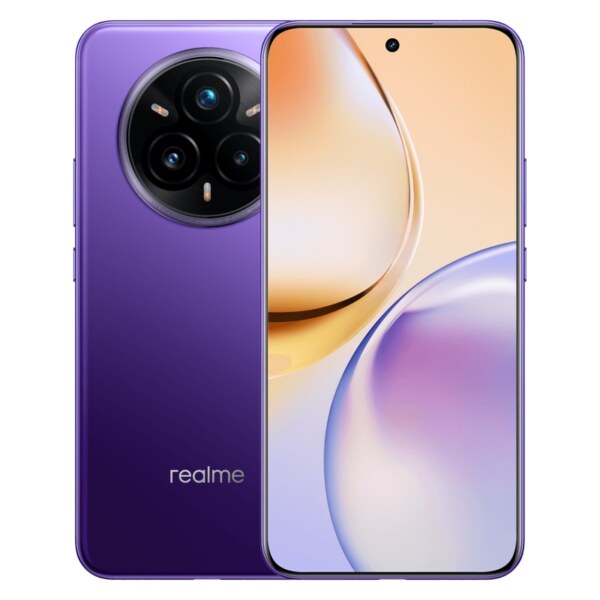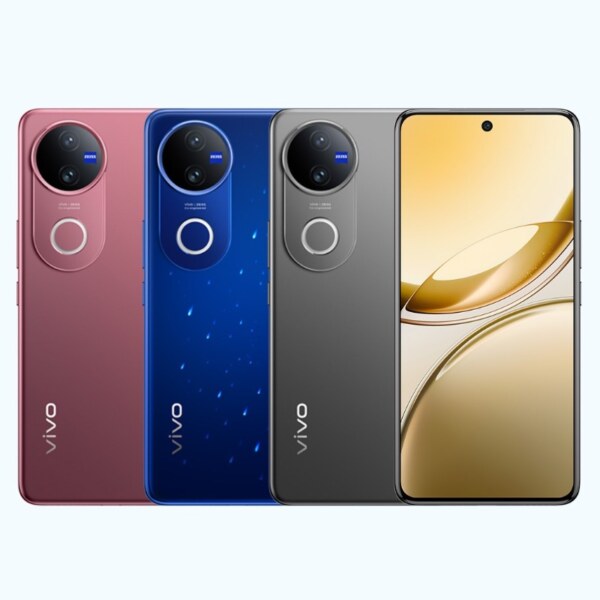Vivo V50 5G launched in India earlier this week and the company debuted it at a slightly higher price point than the Realme 14 Pro+ 5G which was launched back in January. Both of them claim to offer the same USP, which is the cameras. To help you pick one, here’s a comparison between the two devices.
Display
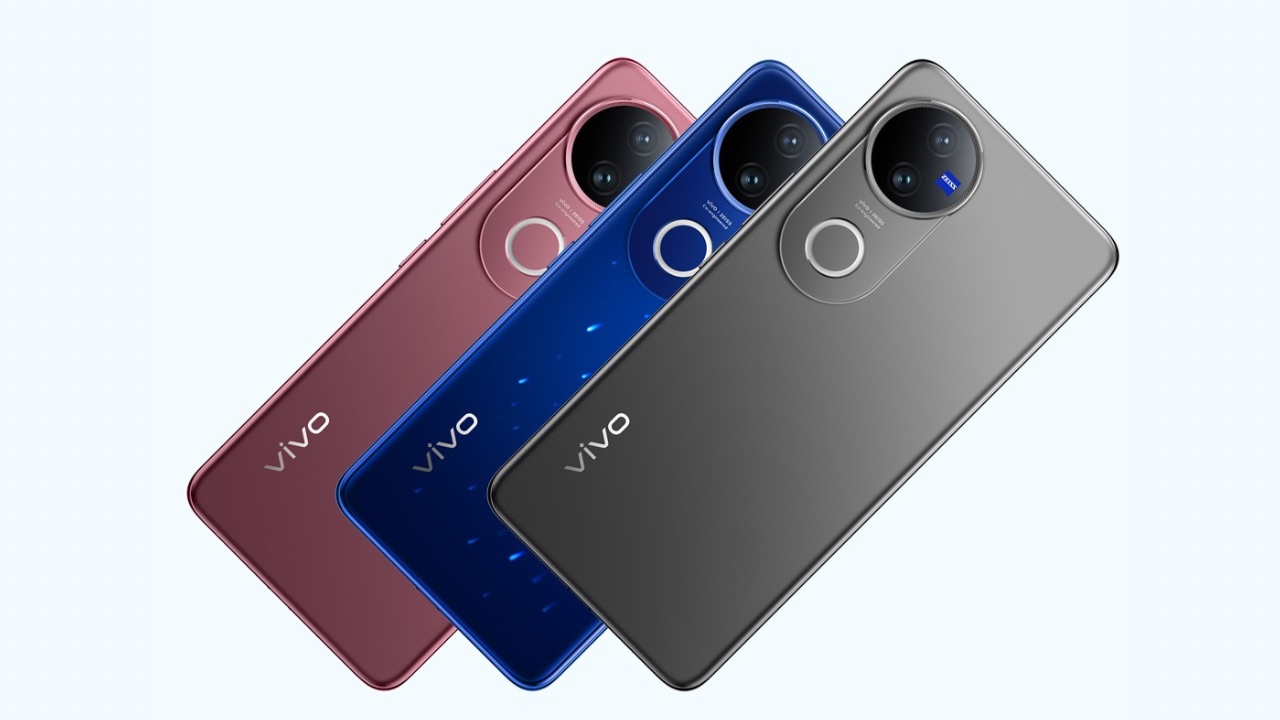
Vivo V50 5G features a 6.78-inch quad-curved AMOLED Display with a full-HD+ 2392 x 1080 Pixels resolution, 120Hz refresh rate, punch-hole cutout, 20:9 aspect ratio, HDR 10+, 4500 nits local peak brightness and 1300 nits max global brightness, 387 ppi, along with 100% DCI-P3 colour gamut.
The Realme 14 Pro+ 5G gets a 6.83-inch quad-curved AMOLED Display with 1.5K Resolution and offers 10-bit colour depth, 2160Hz PWM dimming, 100% P3 colour gamut coverage, 120Hz refresh rate, up to 1500 nits peak brightness and 240Hz touch sampling rate. It also has 20000-level automatic brightness adjustment and Gorilla Glass 7i protection.
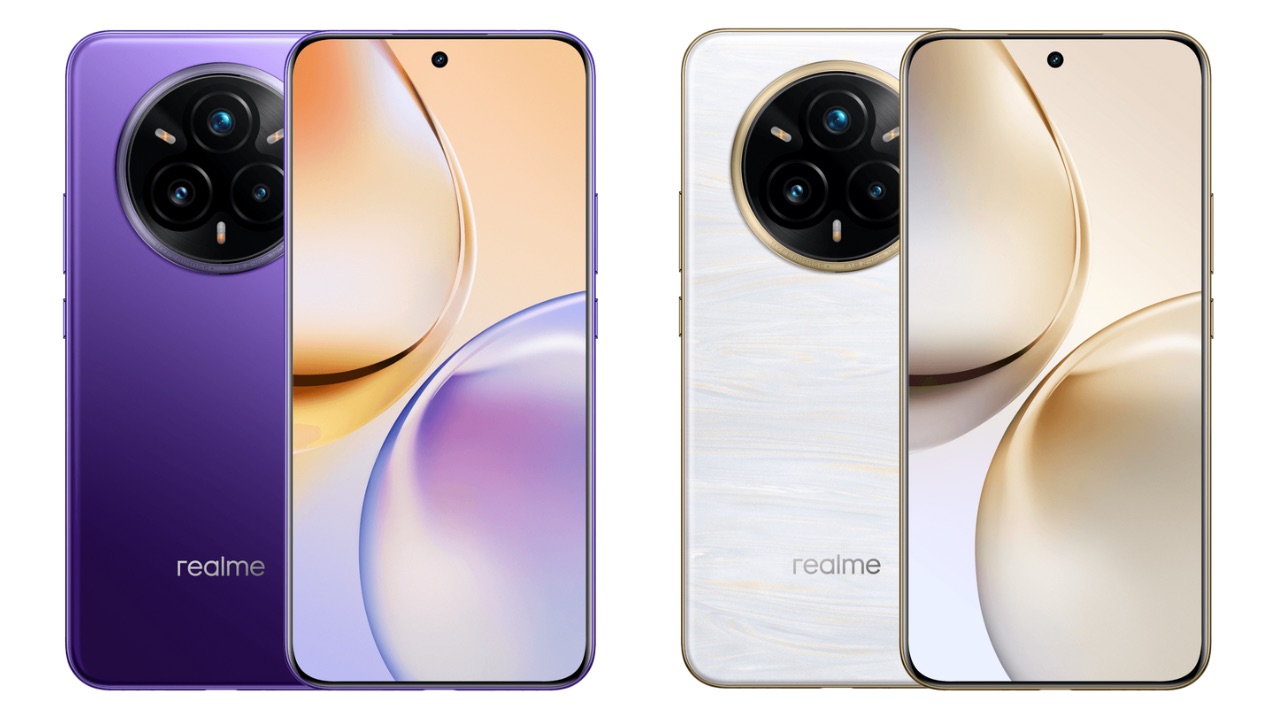
Both the devices have a quad-curved AMOLED panel, but Realme’s device has a slightly bigger one, which is also marginally brighter in global brightness. Not only that, but the display on the Realme 14 Pro+ 5G also features a higher resolution so the content will appear sharper.
Performance & Software
The Realme device is powered by the Snapdragon 7s Gen 3 Processor, while the Vivo device is powered by the Snapdragon 7 Gen 3. Both have up to 12GB RAM, but Vivo’s handset gets up to 512GB storage, which is an advantage for those who want to store more content on their devices. However, note that Realme’s phone uses faster UFS 3.1 storage compared to Vivo’s UFS 2.2 storage.
On the processor side of things, Vivo’s Chipset is better in some areas, and you may or may not notice a difference between the two devices, as software optimisation plays a major role. Realme’s 14 Pro+ 5G and Vivo V50 5G run on their respective Android 15-based skins, but Realme’s UI is more polished and smoother compared to FunTouch OS 15.
Once again, Vivo’s device wins here because even though Realme may have a smoother software, Vivo will offer 3 major OS updates for the V50 but Realme’s phone will get only two OS updates. We’d give this round to the Vivo V50 5G.
Cameras & Battery
The Realme 14 Pro+ 5G packs a 6000mAh battery with 80W fast wired charging. It gets a 50MP f/1.8 Sony IMX896 sensor with optical image stabilisation (OIS), paired with a 50MP f/2.7 Sony IMX882 periscope telephoto sensor with OIS and 3x optical zoom, and an 8MP f/2.2 ultra Wide-Angle camera. For selfies and video chats, there is a 32MP f/2.0 Samsung camera on the front.
Vivo V50 5G also has a 6000mAh battery that supports 90W charging. The smartphone has a 50-megapixel f/2.0 selfie camera with autofocus. The rear camera setup consists of an OIS-assisted 50-megapixel f/1.88 primary camera and a 50-megapixel f/2.0 ultra-wide angle lens, both of which are backed by Zeiss optics.
While both have the same battery density, Vivo’s charging is slightly faster, but a 10 watt difference won’t be noticeable in daily use. On the other hand, Realme 14 Pro+ 5G wins in the camera department due to the extra periscope telephoto sensor it sports. However, it is possible that the general shots from the Vivo V50 5G could be better due to software optimisation. We can’t comment on that as we haven’t used the devices side by side.
Verdict
The Realme 14 Pro+ 5G costs Rs 29,999 for the 8GB + 128GB model, Rs 31,999 for the 8GB + 256GB trim, and Rs 34,999 for the 12GB + 256GB version.
The Vivo V50 5G is available in an 8GB + 128GB trim for Rs 34,999, an 8GB + 256GB model for Rs 36,999, and the top-end 12GB + 512GB version for Rs 40,999.
For the cheaper price tag, the Realme 14 Pro+ 5G has much to offer, including some features we didn’t even discuss, such as a better set of IP ratings. However, Vivo’s device does offer a superior experience in some areas, such as software update policy, a better ultrawide angle sensor, slightly faster charging, and more storage. Overall, if you are tight on budget, the Realme phone is a better choice, but if you want the Vivo phone specifically, it shouldn’t hurt either.


